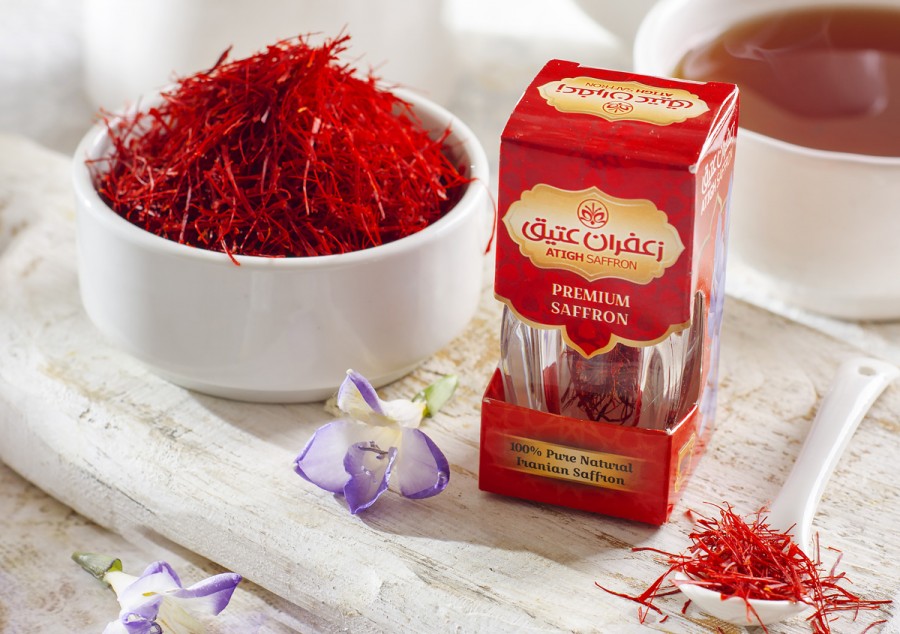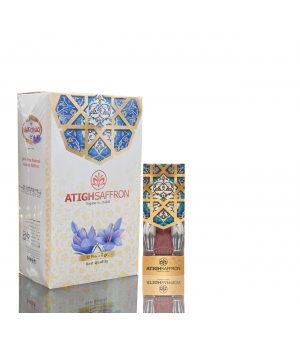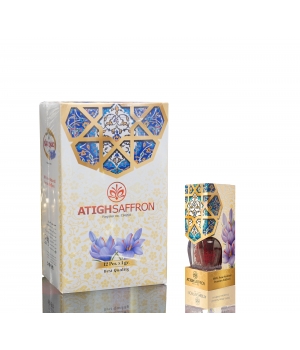Ounce by ounce, saffron is one of the world’s most expensive foods, if not the most expensive food. The riotous yellow, heady spice found primarily in the Mediterranean, North African, and Middle Eastern dishes can run anywhere from $5,000 to $10,000 per pound. (By comparison, highly prized Japanese Wagyu runs only in the low $100s per pound, and even the most luxurious Osetra caviar tops out around the $2,000 per pound mark.) Fortunately, a very little goes a very long way, and mere fractions of grams of saffron can infuse a variety of dishes from the every-day to all-day with its vivid, flavorful character.
It will seem to stick out in an expensive way in your local spice aisle, but low double digits for a bit of saffron seem a small price to pay for the kind of luxury and nuance it imparts. Here’s everything you may need to know about incorporating cooking with saffron, and with it the occasional night in Tunisia, into your home-cooking habitude.
What Is Saffron?
The “threads” or strands of saffron are actually the stamen of a flower—crocus sativus—that thrives in the hot climates listed above. It’s not the rarity of the flowers themselves that makes saffron so expensive, small geographical range notwithstanding, but their brief calendar window for blooming, low yield, and human labor cost needed for harvesting their fragile reproductive bits.
(We’re talking painstaking work with tweezers here, not magical stamen extracting machines.) The crocus sativus stamen are then dried and packaged and should look like fine crimson, petal-like trumpets with a delicate yellow tendril attached.
What Does Saffron Taste Like?
In the manner of some of the world’s most complex food products—Chartreuse, truffles, etc.— saffron’s precise flavor is difficult to describe. It tastes like saffron, which nothing else tastes like, which is why it’s awesome. It is at once, smoky, heady, and bright. Floral, but in a musty way. Earthy, but sweet. In spite of all this complexity, however, saffron plays remarkably well with a wide variety of other foods, from rice and pasta to vegetables, to meat, and even dessert.
Says Azita Mehran, Persian cook and author of the blog Turmeric & Saffron: “In Persian cuisine, saffron is used in both savory and sweet dishes such as in most polow (rice) dishes, tahdig (crispy bottom layer of rice), and many khoresh (stew) dishes, grilled chicken, sholeh zard (saffron rice pudding), as well as in saffron sherbet or saffron tea.” That it bears a biological similarity to vanilla—shout out to the stamen—makes it function in a similar way; it doesn’t need to take center stage, but helps to amplify the complex qualities of every other ingredient it touches. Not to mention that deep, cacophonous color. Talk about a flavor megaphone. Not since Alice’s Wonderland “Eat Me” cakes has food had such an obvious invitation.
How Should I Use Saffron?
A better question is, how shouldn’t you use saffron? As mentioned, saffron isn’t picky about its dance partners, and has the deft skill of a master to make everyone around it look good. Good entry points for saffron cookery are rice-based, homey, and comforting: Persian Rice, Risotto Milanese, or a Spanish Paella Mixta. Mehran offers the following procedure for getting the most out of saffron for cooking: “The best way to use saffron is to take a tiny pinch (of the strands) and grind it into a fine powder using a mortar and pestle or a spice grinder.
Transfer the powdered saffron into a small bowl, add 2-3 tablespoons of hot water (or hot liquid such as broth or stock), give it a gentle stir, cover, and let it bloom for at least five minutes to bring out the color and aroma before adding it to your dish.” Toasting the saffron powder in olive oil on low heat will also help infuse it throughout whatever savory food you are preparing.
How Long Can I Keep Saffron?
As with any dried herb or spice, the shelf life for maximum flavor is relatively short, but you can extend it by keeping it in an airtight container, and “keep it in a cool and dry place away from sunlight,” advises Mehran. Given its expense, you’ll want to get the most out of it as you can.





